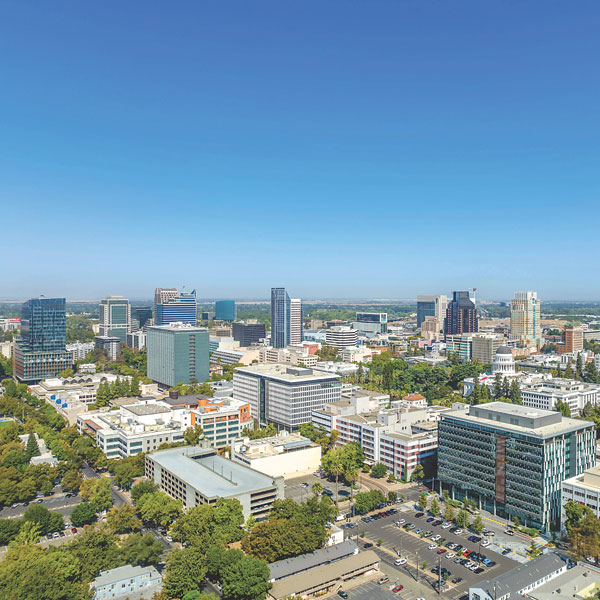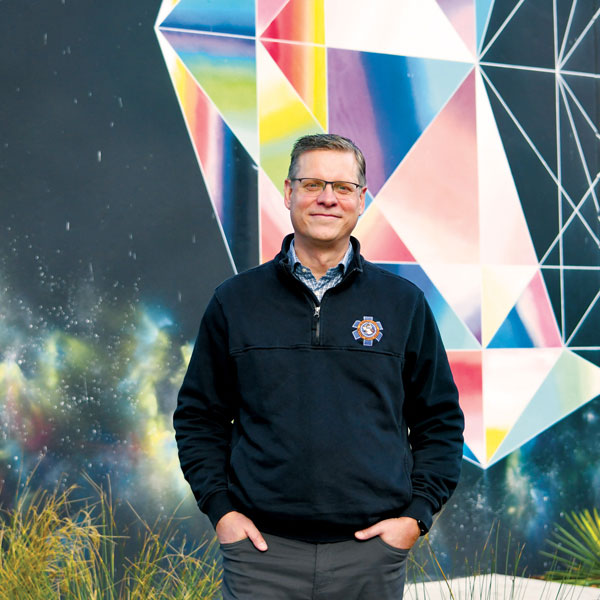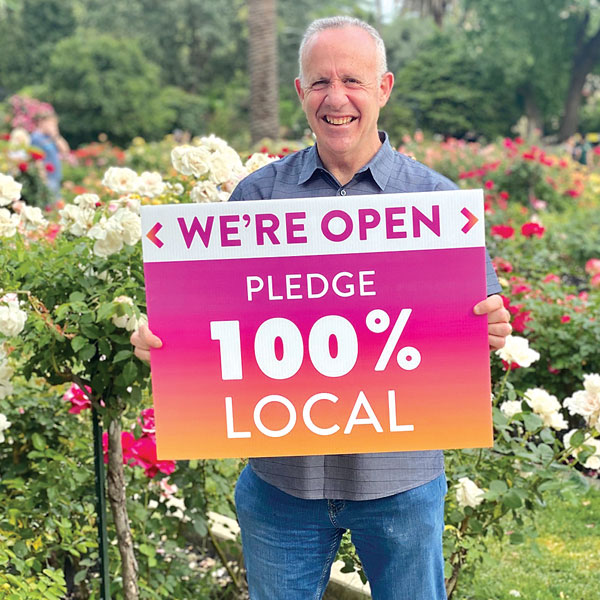Building Our Future
Comeback City
Mark Twain fans know the tale about his obituary getting published while he was still alive, followed by Twain’s protest that “reports of my death were greatly exaggerated.” Accurate or not, the quote applies to Downtown.
When I wrote my first column for Inside in August 2019, the central city was on a roll. Golden 1 Center was only a few years old and getting high marks. Hotels and new housing were coming online. There were plans for riverfront development.
Energy and momentum Downtown were palpable. Everything was looking up. The headline an editor put on my debut column summed up the mood: “It’s finally our moment, Sacramento.”
A few months later, it all ground to a halt. The pandemic locked down much of California. With state employees working remotely, Downtown was deserted. Restaurants and small businesses failed by the day.
Healthy Option
The last time Dr. Lou Vismara had an idea this big it turned into the UC Davis Mind Institute, a renowned research center for autism and other neurodevelopmental conditions.
Vismara, 81 and retired from his cardiology practice, is at it again. He teamed with developer Angelo Tsakopoulos to plan a 2,800-acre project on Tsakopoulos’ property that spans parts of Folsom and two counties, Sacramento and El Dorado.
The development includes what Vismara and Tsakopoulos call a “Community for Health and Independence” that can be replicated elsewhere.
Designed for elder residents and people with disabilities, the plan counts the UC Davis Health Center and Sacramento State University as partners. Although it must survive governmental reviews before anything gets built, the new community is generating excitement and consternation.
Sensible Approach
There are many reasons for Sacramento’s homeless crisis, and Dr. Gregory Kann, county director of emergency services, has come up with a plan that sounds like it can make a difference.
It’s called TAD, for “Triage to Alternate Destination.” It could be shorthand for “empathy and common sense.”
In the past, when people living on the streets engaged with the 911 system, they were taken to an overcrowded hospital emergency room.
Federal law requires they cannot be turned away without treatment. For this and other reasons, including how a growing number of people visit emergency rooms because doctor appointments are often booked up far in advance, ERs have, as Kann says, “become a public health emergency.”
Sold On Downtown
A good way to measure the city’s health is whether smart people invest money here.
By that gage, the recent purchase of the Wells Fargo Tower at 400 Capitol Mall is encouraging news for Downtown.
A partnership affiliated with late local developer Buzz Oates recently paid $117 million for the elegant building. That’s a big drop from 2019, when the tower sold for almost $200 million.
But if Downtown were dead or dying, as some suggested after the pandemic, remote work for state employees and civil disobedience in 2020, these savvy investors would not have made the deal, even for a discount.
The Placemaker
After eight years as mayor, Darrell Steinberg knows the homeless crisis will be part of his legacy regardless of the resources, energy and political capital he put into the search for answers.
“I know two things,” Steinberg says. “I think I have been hurt by the expectations I set for myself and I readily acknowledge it. I came in as president of the Senate, author of the (state’s) Mental Health Services Act, and I pushed really hard, and I think the fact that it grew worse not just in the city but in the entire state, people said, ‘Come on. You said it was going to get better,’ and I have to own that.”
Pipe Dreams?
One of the most inspired quotes about cities comes from planner and architect Daniel Burnham, whose vision for the Chicago lakefront sparked an aesthetic renaissance still paying dividends generations after his death in 1912.
“Make no little plans,” Burnham said. “They have no magic to stir men’s blood and probably will not themselves be realized. Make big plans, aim high in hope and work, remembering that a noble, logical diagram once recorded will never die, but long after we are gone will be a living thing, asserting itself with ever growing insistency.”
That seems to be the mindset at Sacramento State, where President Luke Wood and Athletic Director Mark Orr have ambitious but vague plans for a new multi-purpose stadium to propel the school into a major athletic conference, such as the Mountain West or Pac-12.






